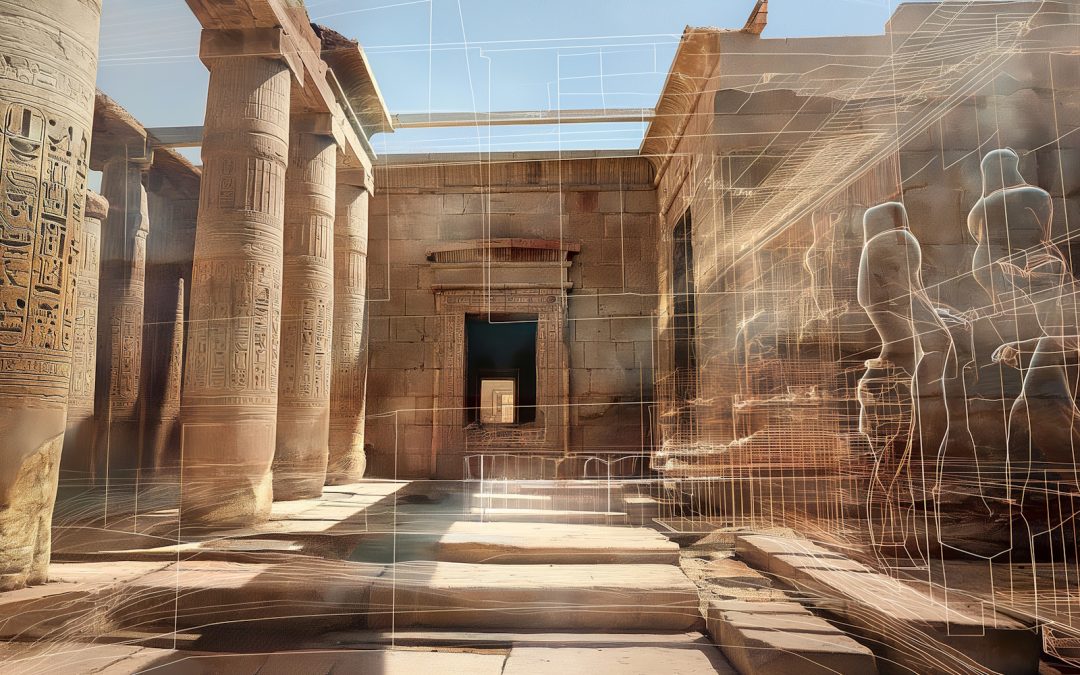Augmented Reality (AR) is rapidly transforming the way we interact with cultural heritage and historical sites. By superimposing digital content onto the real world, AR provides a layer of immersive storytelling that brings history to life in ways that were previously unimaginable. Whether you’re visiting ancient ruins, museums, or cultural landmarks, AR is revolutionizing how we experience and understand the past.
How AR Enhances Historical Sites
AR plays a crucial role in making historical sites more engaging and accessible. By integrating virtual elements with the physical world, visitors can interact with reconstructions of ancient buildings, historical figures, or key moments in history. This technology enables deeper learning experiences, making the history of cultural heritage sites more vivid and relatable.
For instance, the Acropolis in Greece and Rome’s Colosseum use AR to show tourists how these landmarks looked during their peak. Such tools allow users to overlay historical visuals onto the present-day sites, offering a glimpse of ancient life as it once was.
Benefits of Augmented Reality for Cultural Heritage
1. Interactive Learning
AR encourages visitors to engage actively with historical sites. Instead of passively reading plaques or listening to audio guides, users can interact with 3D models of ancient ruins or historical figures. This turns site visits into dynamic educational experiences that bring the past into the present.
Key Resource: Learn how AR revolutionizes educational experiences.
2. Enhanced Storytelling
One of AR’s greatest strengths lies in its ability to provide layered narratives. Historical events, timelines, and stories can be overlaid onto real-world surroundings. Imagine walking through a battlefield and seeing the reenactment unfold in front of you or strolling through an archaeological site as it is reconstructed before your eyes.
Key Resource: The future of storytelling with AR.
3. Preservation of Fragile Artifacts
Many historical sites and artifacts are too delicate for frequent visitor interaction. AR provides a solution by offering virtual replicas that visitors can explore without causing harm to the physical site. This helps ensure the preservation of irreplaceable heritage while still offering engaging, in-depth exploration.
Key Resource: Explore how AR contributes to the preservation of cultural heritage.
4. Making History Accessible
AR helps bridge the gap between the past and the modern world by making historical content accessible to a wide range of visitors. This includes providing translations, audio descriptions, and visual aids for those with disabilities. AR’s flexibility allows cultural heritage to be shared more broadly.
Key Resource: How AR increases accessibility in tourism.

Top AR Applications for Cultural Heritage
1. TimeLooper
TimeLooper is an AR app that brings historical events to life. Users can experience reconstructions of events at landmarks like the Tower of London or the Great Wall of China. Time travel through your smartphone to witness history firsthand.
- Available for iOS and Android
- Learn more: TimeLooper Official Website
2. Histovery
Histovery offers a rich cultural heritage experience by enabling users to see detailed reconstructions of historic sites and events. It is widely used in Europe to bring castles, monuments, and archaeological digs to life with 3D models and interactive guides.
- Available for iOS and Android
- Learn more: Histovery App
3. ARtGlass
ARtGlass takes AR into the world of museums and cultural institutions. Visitors can wear AR glasses to interact with art and historical objects, viewing digital overlays that provide context, historical data, and narratives about the exhibits.
- Available for Museums and Exhibitions
- Learn more: ARtGlass Official Website
Notable Historical Sites Using AR
Several cultural heritage sites have already integrated AR into their visitor experiences, including:
- The Acropolis, Athens: AR allows visitors to see what the ancient buildings once looked like.
- The Colosseum, Rome: Visitors can witness virtual gladiator battles in 3D while standing in the arena itself.
- Pompeii, Italy: AR tours bring the ruins of Pompeii back to life, showing the city as it was before the eruption of Mount Vesuvius.
Key Takeaways
- Immersive Storytelling: AR turns historical narratives into immersive experiences, enhancing visitors’ connection to the past.
- Educational Engagement: By integrating interactive features, AR promotes active learning at historical sites.
- Preservation and Access: AR supports the preservation of cultural heritage by offering digital replicas that reduce wear on fragile artifacts.
- Broadening Accessibility: AR helps make history more inclusive, offering tools to aid visitors of all abilities and languages.
Conclusion: The Future of Historical Exploration
Augmented Reality is revolutionizing the way we explore and understand history. By blending the physical and digital worlds, AR brings historical sites and cultural heritage to life, making the experience more interactive, educational, and accessible. From the Colosseum to the Acropolis, AR is changing the way we interact with the past and preserving it for future generations.
Visit ARVRTravel.com to stay updated on how technology is transforming the way we explore the world. Explore more articles on the future of travel and learn how AR and VR are reshaping the tourism industry!

